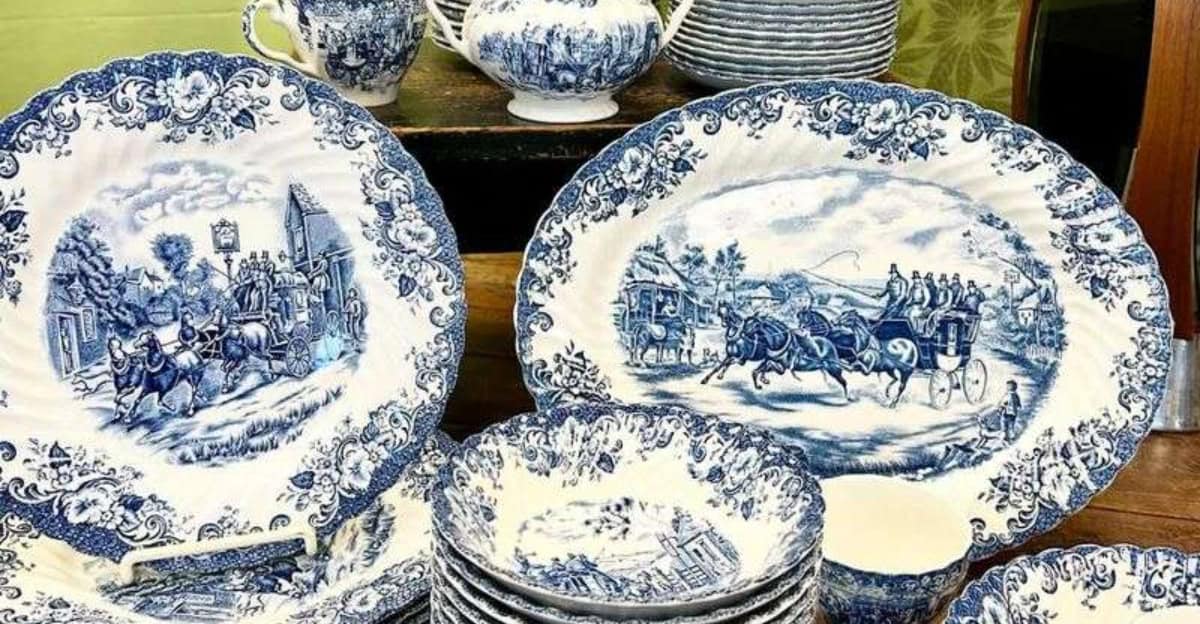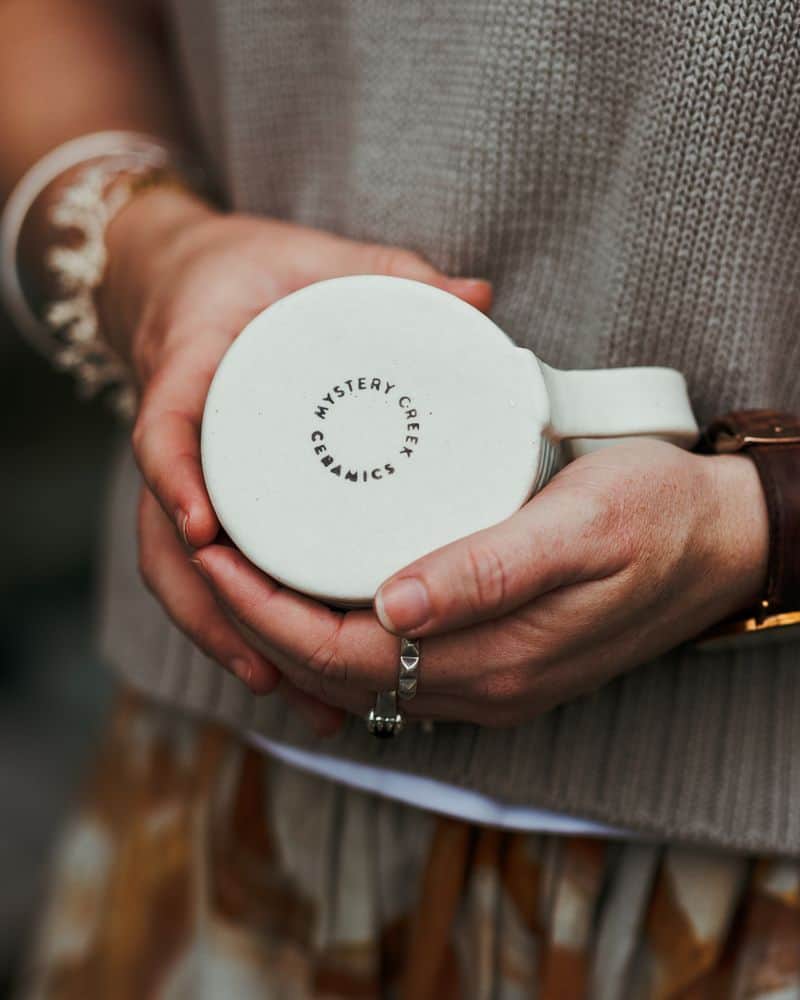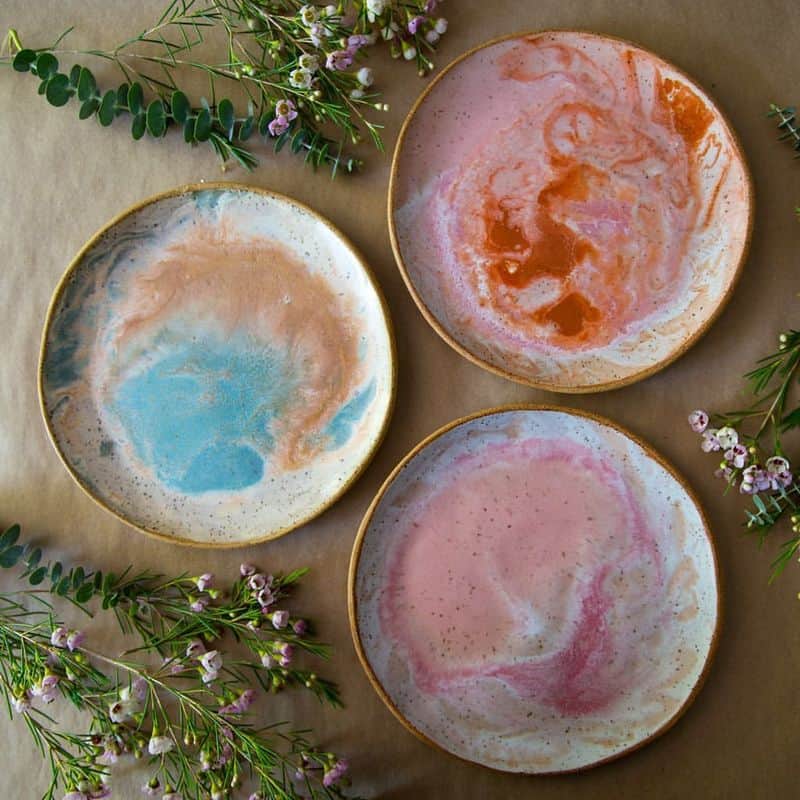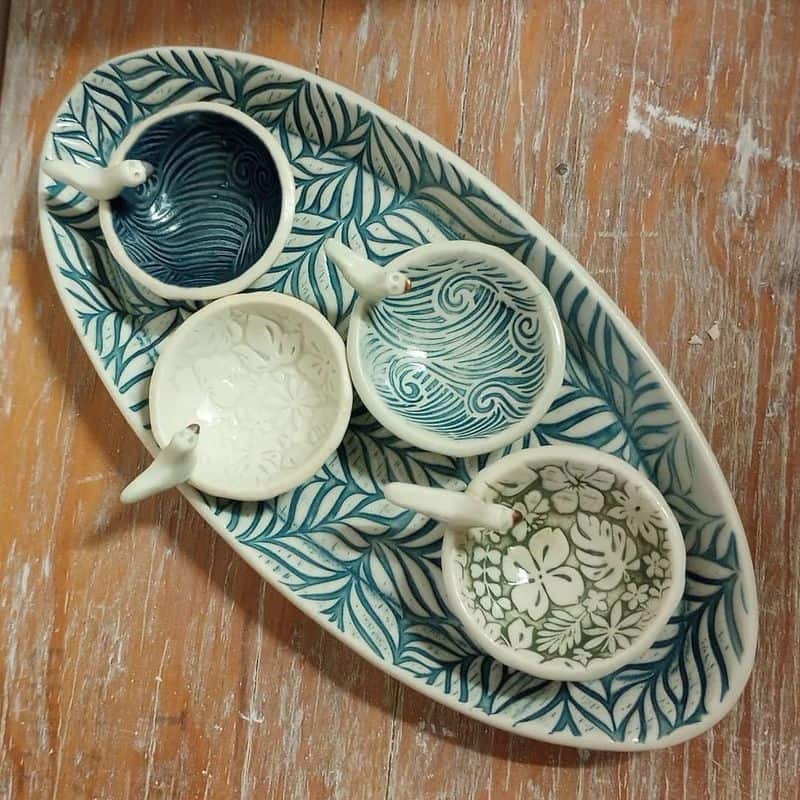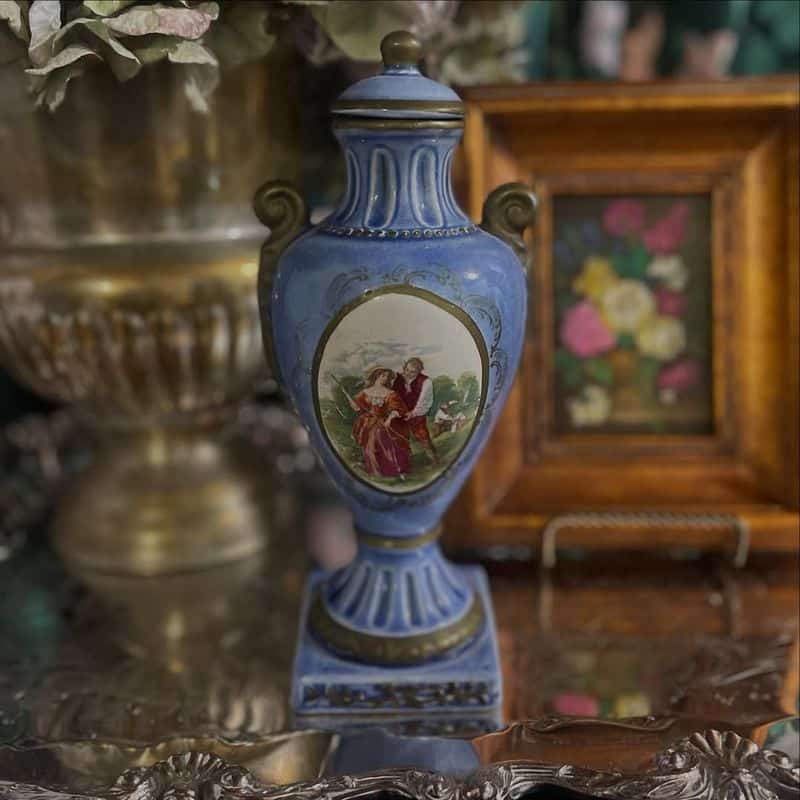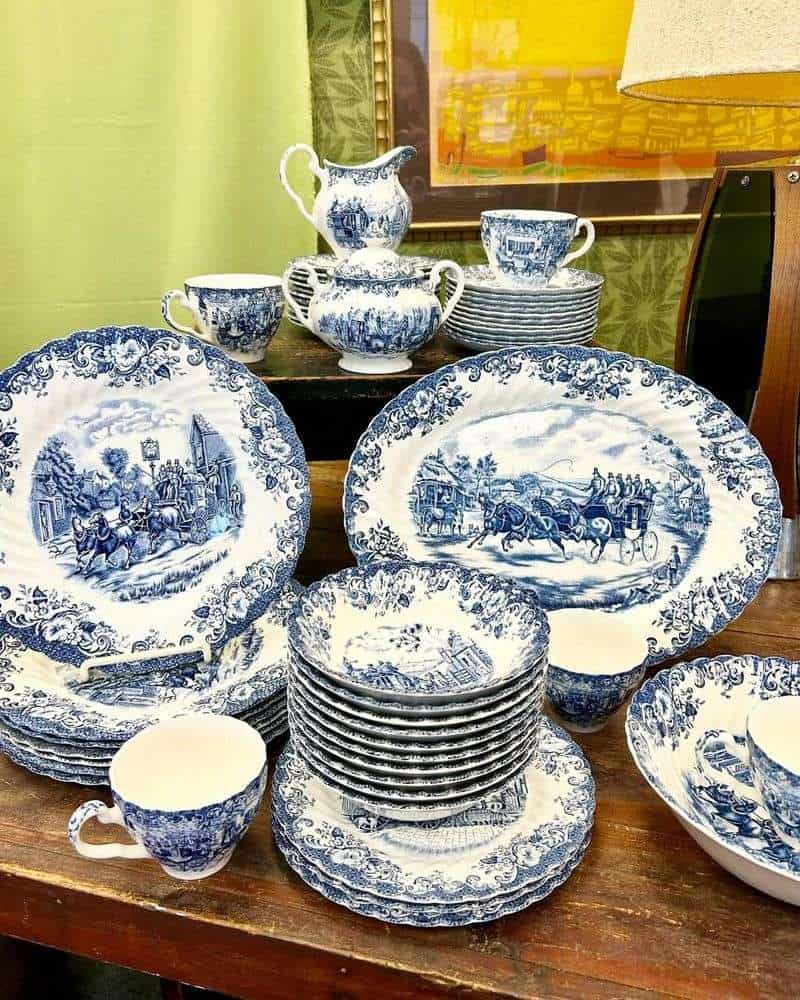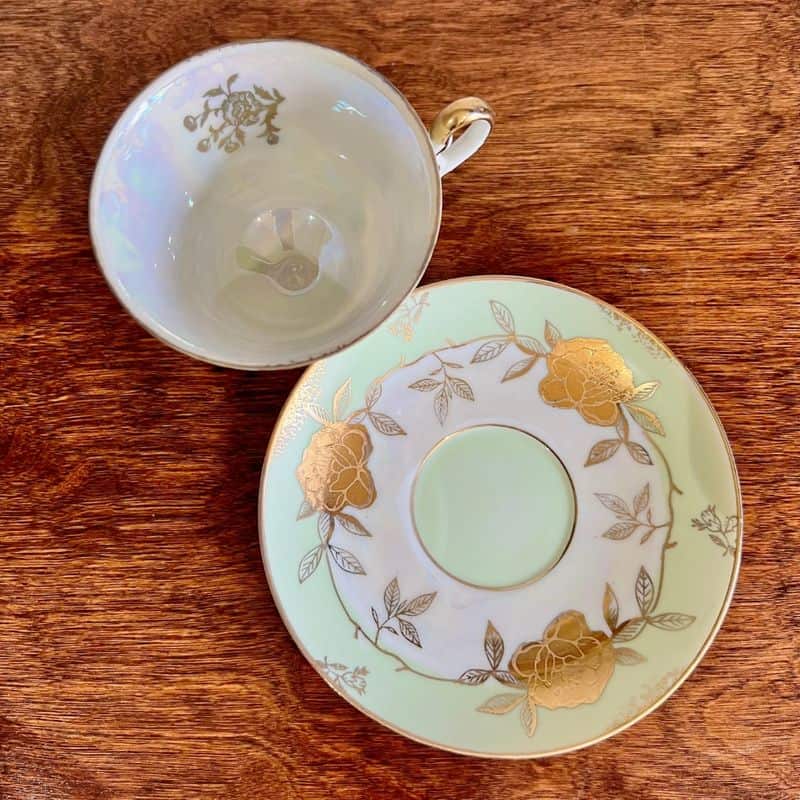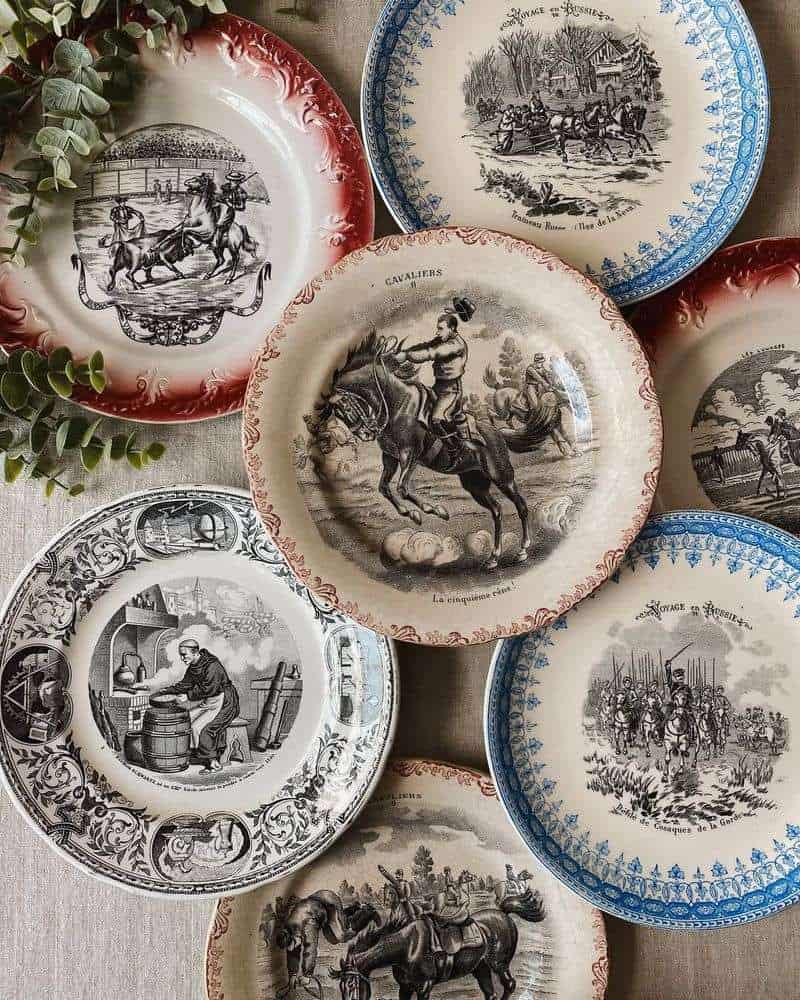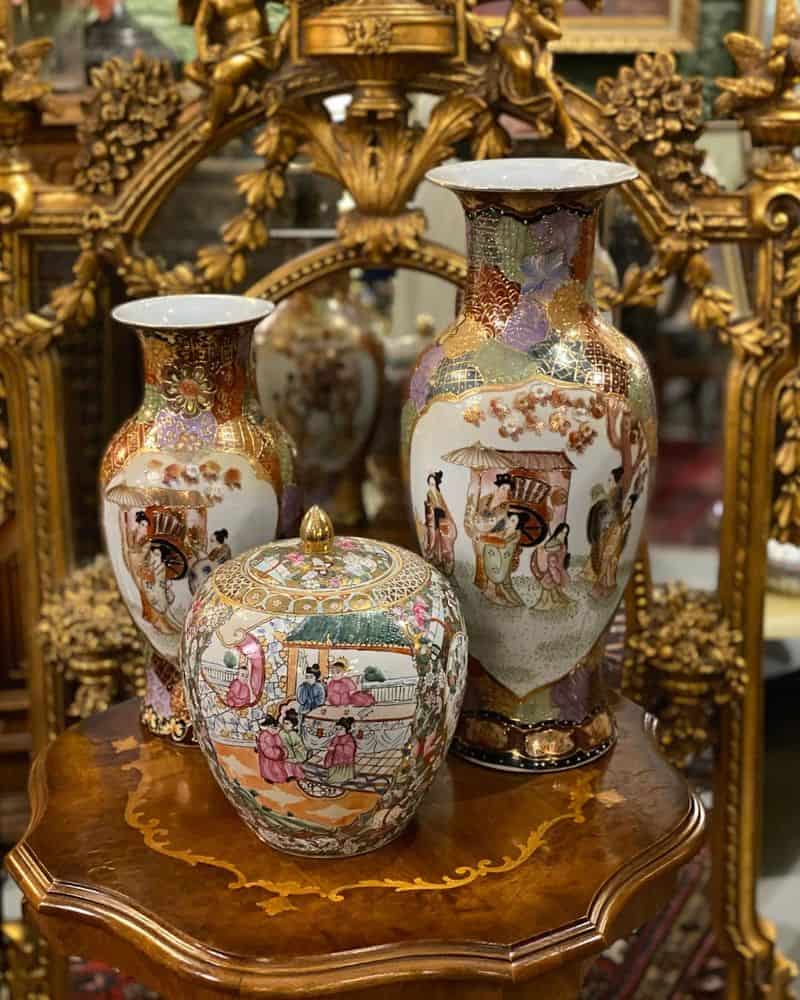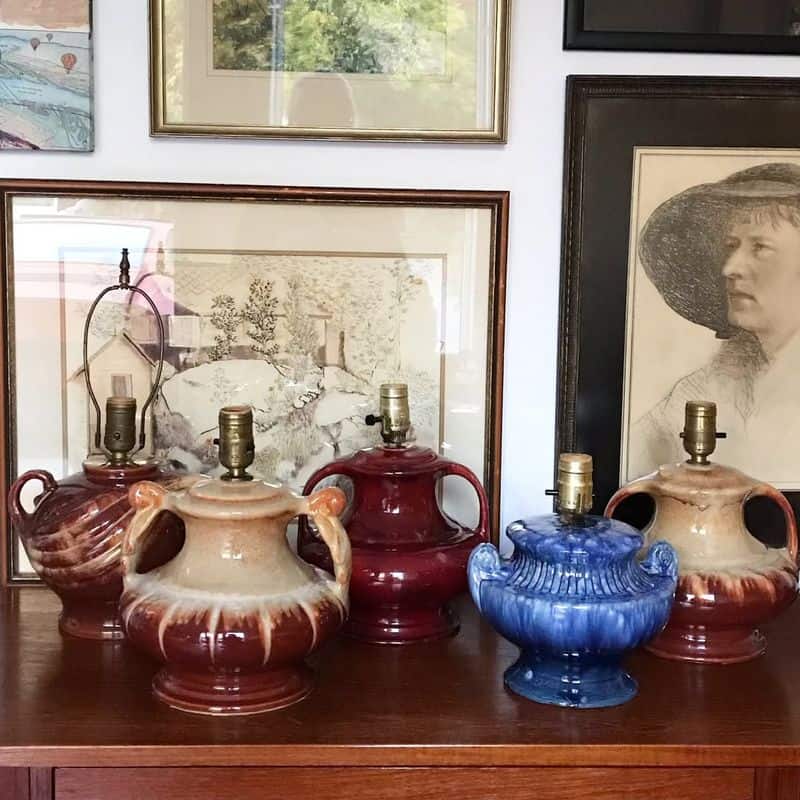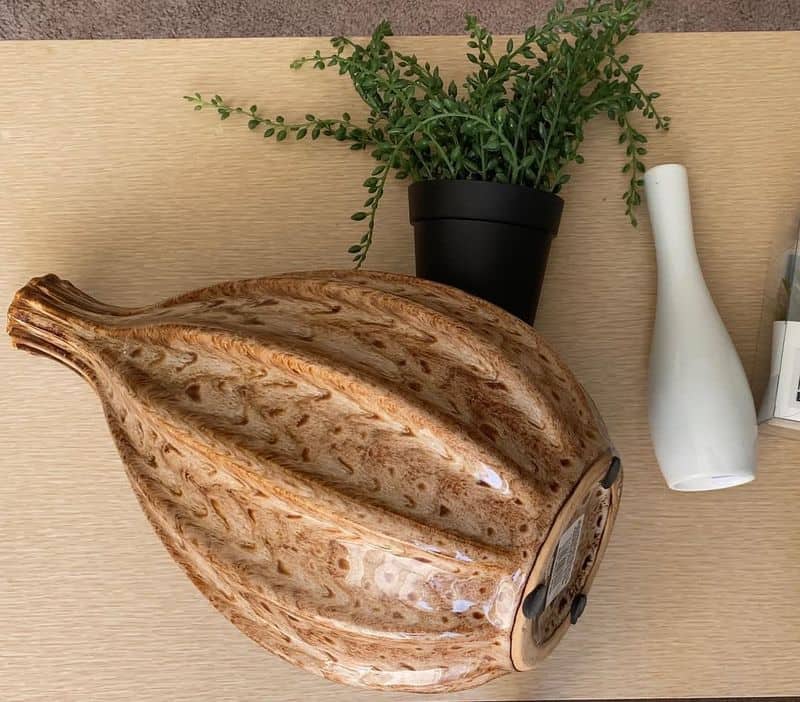Knowing whether your ceramic piece is antique or just vintage can be as tricky as telling twins apart. But fear not!
Here are 10 easy ways to decode the mysteries of your pottery treasure.
Each method brings you one step closer to unveiling the true history and value of your ceramic collectible.
1. Maker’s Mark
Ever played detective? Well, spotting the maker’s mark is like finding a clue in a mystery novel.
These marks, often found on the base of the piece, can reveal the pottery’s origin, the artist, and sometimes the date of production.
Each mark is unique, much like a fingerprint, and some are cryptic enough to require a little research. But fear not, sleuth!
Online databases or specialist books can help decode these symbols. If your ceramic has a maker’s mark, you’re already halfway to unraveling its age and historical significance.
So, grab your magnifying glass and get investigating!
2. Glaze and Finish
The glaze and finish of a ceramic can tell tales of its past. Old ceramics often have a rich, deep glaze that reflects light like a mirror.
On the other hand, a crazed or crackled glaze can indicate age, as these tiny lines form over time. A matte finish might suggest a more contemporary piece.
When examining your ceramic, note the texture and shine. Does it seem refined or more rustic? These characteristics not only help date the piece but also add to its charm.
So, take a closer look and let the glaze guide you through time.
3. Weight and Texture
Feel is everything! Pick up that ceramic and let its weight and texture speak volumes. Antique ceramics are often heavier, thanks to the materials and techniques used in their creation.
They also tend to have a smoother texture, polished by time and use. In contrast, newer pieces might feel lighter and less substantial. Run your fingers over the surface; does it feel like silk or sandpaper?
These tactile hints are your ceramic’s way of whispering its age-old secrets. So, trust your senses and let them guide you through the ceramic’s tale of time and creation.
4. Color and Design
Colors can speak louder than words! Antique ceramics often boast a more subdued, earthy color palette, while vintage pieces might be vibrant and bold.
Historical design elements can also hint at the era; think floral patterns for the Victorian age or sleek lines for the mid-century.
Examine the intricacy of the design – hand-painted details are often a sign of older craftsmanship. Does the design tell a story or reflect a particular style?
Let the colors and patterns transport you back in time, revealing not just the ceramic’s age but also its cultural significance.
5. Foot and Base Wear
The base of your ceramic can be a window to the past. An antique piece often shows wear on the foot or base due to decades, even centuries, of use.
Look for signs of scuffing, discoloration, or minor chipping. These marks of wear and tear aren’t flaws; they’re badges of honor, narrating stories of the ceramic’s journey through time.
In contrast, a newer piece may have a pristine base, lacking the character-building scrapes of an older item.
So, turn that ceramic over, and let the base whisper its storied past into your curious ears.
6. Firing Marks
Ever heard of kiln kisses? These are the delightful marks left behind during the firing process. Older ceramics might bear these unique impressions, as kiln technology wasn’t as advanced back then.
Firing marks can include splatters, uneven spots, or even tiny indentations left by kiln props. These imperfections add character and authenticity to an antique piece.
Modern ceramics are usually free of these charming flaws, thanks to modern production techniques.
So, inspect your ceramic for these historical footprints and enjoy the story told by its firing marks – each one a testament to the pottery’s fiery creation.
7. Material Composition
Peek beneath the surface to understand the material used in your ceramic. Antique ceramics often consist of materials like bone china or earthenware, each having distinct characteristics.
Bone china is known for its strength and translucence, while earthenware is more porous and rustic. Modern ceramics might use synthetic materials, making them lighter and more uniform.
By examining the composition, you can gain insights into the ceramic’s origin and age. Is it heavy with history or light with modernity?
Let the material composition guide you in distinguishing between the old and the new, providing a tactile sense of time.
8. Provenance and Documentation
The story of your ceramic might be written in paper or etched in history. Provenance refers to the documented history or the lineage of ownership of a piece.
This can include receipts, auction catalogues, or family records. An item with a well-documented provenance not only increases in value but also lets you trace its journey through time.
Lacking documentation doesn’t mean your ceramic isn’t antique; it just makes the detective work more thrilling.
Dig into any historical records or stories attached to your piece, and let them paint a vivid picture of your ceramic’s past adventures.
9. Sound Test
Have you ever tried listening to your ceramic? The sound test involves gently tapping your piece and listening to the tone it produces.
A clear, resonant ring often indicates a fine, high-quality ceramic, possibly antique. In contrast, a dull thud might suggest a newer piece or even damage.
This auditory test is like a ceramic symphony, where each note tells a part of its story. So, give your ceramic a gentle tap and let its music transport you through time.
Who knew ceramics could sing their history so eloquently? Embrace the melody of your piece and discover its age-old secrets.
10. Reproductions and Fakes
Not everything is as it seems in the world of ceramics. Reproductions and fakes abound, and spotting them requires a keen eye.
Look for inconsistencies in the glaze, unusual markings, or signs of modern manufacturing. A perfect piece might actually be too perfect – a hallmark of reproduction.
Consult expert appraisers or reliable references to verify authenticity. Remember, a reproduction isn’t worthless; it’s just from a different era.
By learning to spot these nuances, you can appreciate ceramics for what they truly are, whether they whisper tales of ancient times or stories of skilled imitation.

